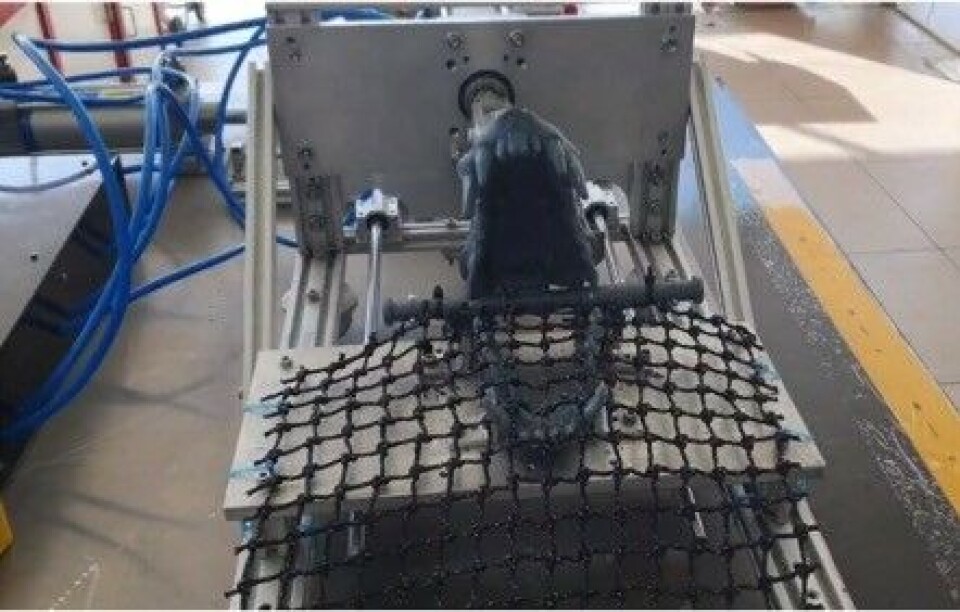
Robot predator jaws created to test net strength
Aquaculture net maker Garware has created a robotic sea lion jaw, capable of simulating a bite force ranging from 5 kgF (kilogram-force) to 100 kgF, to test the rigidity and shear resistance of the products it sells to Chilean salmon farmers.
“The global aquaculture industry experiences a constant fight against the attacks of predators, who want to make holes in the cage nets and reach the fish, the loss of which is a great problem that salmon producers face,” Garware said in a press release.
“In its constant search for solutions for aquaculture, Garware Technical Fibres presents a new development that tests the resistance of its nets, through the creation of a 3D printed robotic jaw of a sea lion capable of simulating a bite force that ranges from 5 kgF to 100 kgF, in order to comparatively test their rigidity and resistance to cutting.”

Simulated bite force
Gopakumar Menon, the Indian company’s Americas general manager, said: “Our R&D team 3D printed a sea lion skull and then robotised the jaws, creating the aquaculture industry’s first bite force robot, capable of simulating bite force, as well as pushing and pulling in its position, emulating the real-life scenario for different predators.”
Garware has introduced the Sapphire Ultra Core MBX and Sapphire Ultra Guard sells predator nets to the market in Chile, where the industry has a goal of zero mortality due to predation.
Used successfully
“Polyethylene fibre nets with a stainless steel core minimise the effects of predator attacks, with high resistance to sea lion cuts, five to six times stronger than nylon or polyester,” said Francisco Serra, business associate Garware Chile.
“Ours are being used successfully in Chile: farms that had a great loss of fish have informed us of almost zero losses after the installation of predator nets, with enormous advantages for salmon farmers.”
An investigation by Norwegian research company SINTEF concluded that breaks in nets were responsible for 60% of fish escapes in Norway, while in Scotland attacks by seals from outside and sometimes inside cages are responsible for the deaths of more than half a million farmed salmon annually.























































